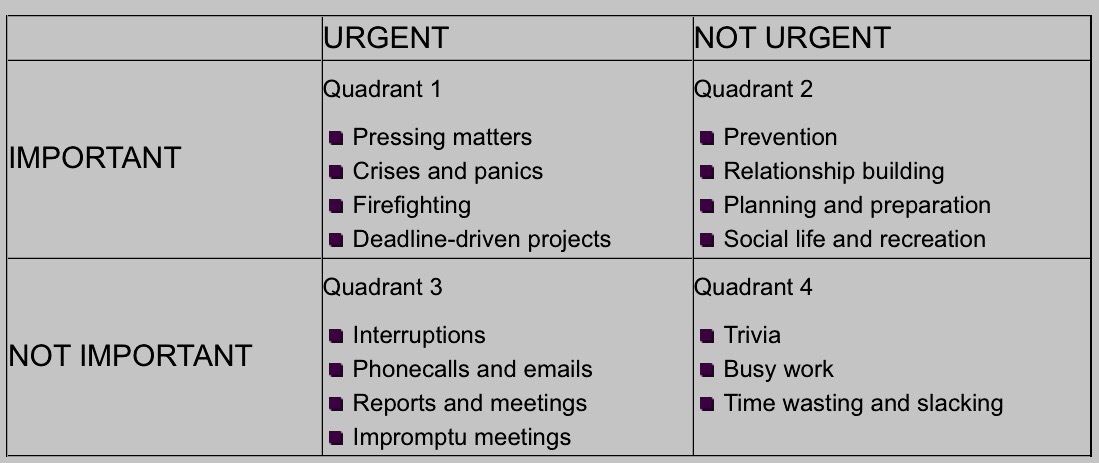
When learning how to prioritize the real trick is not to manage time, but to manage yourself.
Take a leaf out of Dr. Stephen Covey’s book, The Seven Habits of Highly Effective People. Habit three is about prioritizing and putting first things first.
This time matrix can help at work and at home:

To put it simply:
- Spend less time in Q1
- Say ‘No’ to Q3
- Stop slacking off in Q4
- Spend more time in Q2
Let’s talk about some of the pitfalls that happen when you spend too much time in Q2. In the Dining Room, Managers of all ages and experience levels make the common mistake of spending their shift putting out fires.
Let’s role-play: ‘Behind the Kitchen Door’
The atmosphere in the kitchen is hot and charged with noise and commotion and energy. Tonight everyone ordered Prime Rib and the expo is getting crushed.
Plates are stacking up and orders are dragging in the window. As Manager its your job to get these plates into the dining room as quickly as possible.
What do you do?
Your decision to grab a tray is commendable and often draws admiration from the team, but the thinking is fundamentally flawed because the task is more than a one person job.
Instead of assuming the role of an hourly employee, the Manager should rally the team to work together. The result: the window will be cleared more efficiently and the guests will enjoy their dinner without ever knowing that there was a problem on the line.
A step often missed occurs after the Manager finishes touching any affected tables in the dining room. The next step should be to ‘Circle Back’ and find out what went wrong.
* Successful managers will discipline themselves to investigate to the root cause of problems, then implement management systems to make sure the same mistake doesn’t happen again.
In this case the opening server who was supposed to prep the side station with horseradish cream sauce was late for work and opening side work wasn’t done to completion, so when the line crashed a cook had come off the line to prep and portion sauces on the fly.
When the blame game begins it will be easy to blame the employee for not finishing their sidework, but in reality it’s the Managers fault.
The Manager knew the employee was running late, but they never delegated or followed up to ensure all daily tasks were done. If a Manager Walkthru of the entire restaurant prior to service was completed the incomplete sidework would have been found.
In my experience, I have found the walk thru to be an essential step in establishing leadership by helping set your team up for success.
* Takeaway: When confronted with your next crisis think big picture first, then manage down to the smallest detail. Your guests and Your team will thank you for it.
Cheers!
Chris
Chris Katon is a Professional Restaurant Operator with 20+ yrs experience hiring, training and developing highly skilled service teams.
#Hospitality #Food #Wine #Travel #Tourism
